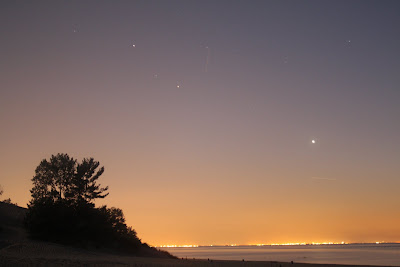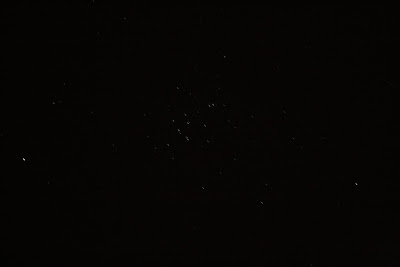Why did I choose the Canon 1000D (Digital Rebel XS)? Here's what I've learned from various sources about cameras:
What Kind of Pictures Do You Want to Take?
What's the Best Camera to Take Them With?
* Scenics - DSC or DSLR
* Planetary - Webcam
* Deep-sky - CCD or DSLR
Canon DSLR's are standard, then Nikon in second
Good points about the Canon 1000D (Digital Rebel XS):
Low noise (Canon is typically better)
High sensitivity
Good signal to noise ratio
Live-view focusing
Dust-reduction
Single-Cable operation
It'll double as a daytime camera that's much better than what I already have (cell phones have more megapixels)
I can start learning to take scenic astrophotos without the worry of telescopes and tracking, etc. and then upgrade to attaching it to a telescope.
So, for a modest $450, it fit the budget well, allowing me to take scenic pictures on a tripod and Deep-Sky images through the Celestron SCT. I'll probably try it through the EON refractor, too, just to see what happens. Most of the info came from http://www.astropix.com/HTML/I_ASTROP/CAMERAS.HTM
I did get a zoom lens as well, which will likely be used.
Needed: T-ring adapter for attachment to the scope
Adapter for >30 sec. exposure

 The Milky Way as it appeared to the naked eye (roughly)
The Milky Way as it appeared to the naked eye (roughly) The Milky Way as it appeared to the naked eye (roughly)
The Milky Way as it appeared to the naked eye (roughly)



































